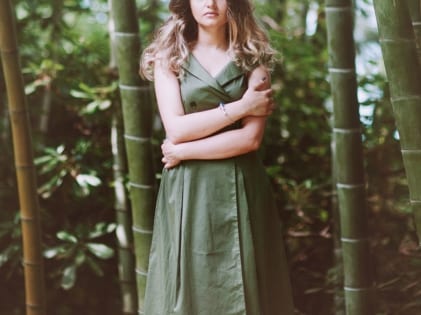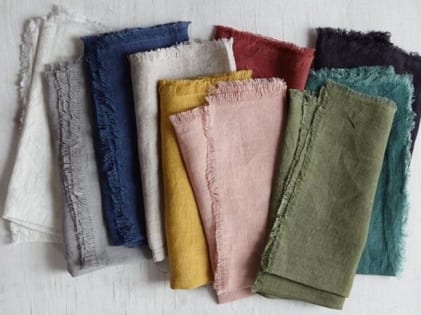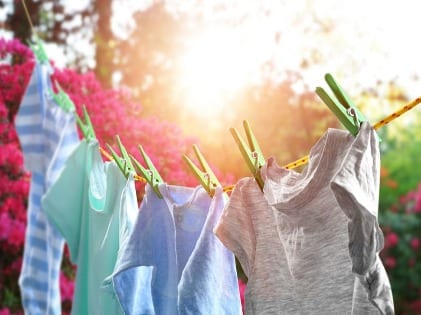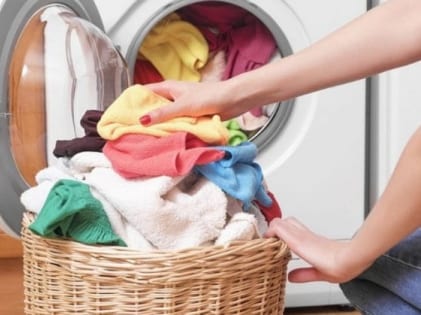 More and more people are indeed going out of their way to live a life that is more environment-friendly and sustainable. Fashion is changing every few weeks or so, and brands are churning out new clothes at a break-neck speed. But what is heartening to see is fashion is focusing more on the deeper aspect of it than just focussing on the excess and frivolous part of it. Slow fashion is gradually replacing ‘fast fashion.’
More and more people are indeed going out of their way to live a life that is more environment-friendly and sustainable. Fashion is changing every few weeks or so, and brands are churning out new clothes at a break-neck speed. But what is heartening to see is fashion is focusing more on the deeper aspect of it than just focussing on the excess and frivolous part of it. Slow fashion is gradually replacing ‘fast fashion.’
So, what is show fashion all about? Well, it’s fashion that is concentrating on environment-friendly practices and ensuring minimum wastage, adding a fresh perspective to age-old notions. True, you want to make environment-friendly fashion choices, but how can you do that and it isn’t frightfully expensive to go environmental-friendly? Don’t worry, you can be part of the new sustainable fashion brigade that too without making a big hole in your pocket.
Choosing the right fabric
 Choosing cloth-like organic cotton can make a world of difference as it requires less water than normal cotton. Also, it requires fewer chemicals. Not only cotton, but there are other fabrics such as vegan silks that give a cruelty-free option to old techniques of making silk, such as boiling silkworms. Options such as bamboo and hemp also deserve your attention and are gradually replacing synthetics.
Choosing cloth-like organic cotton can make a world of difference as it requires less water than normal cotton. Also, it requires fewer chemicals. Not only cotton, but there are other fabrics such as vegan silks that give a cruelty-free option to old techniques of making silk, such as boiling silkworms. Options such as bamboo and hemp also deserve your attention and are gradually replacing synthetics.
Who makes my clothes?
 Expensive clothes are not the only sustainable ones. Add to that a great many luxury brands aren’t always ethically made. Always try and check the supply chain of the brand you are about to purchase. So, try and find out who made your clothes and find out whether that particular brand offers pocket-friendly clothes that are also sustainable. Pocket-friendly and affordable aren’t that oxymorons they are considered to be a little digging can help you find exactly what you are looking for.
Expensive clothes are not the only sustainable ones. Add to that a great many luxury brands aren’t always ethically made. Always try and check the supply chain of the brand you are about to purchase. So, try and find out who made your clothes and find out whether that particular brand offers pocket-friendly clothes that are also sustainable. Pocket-friendly and affordable aren’t that oxymorons they are considered to be a little digging can help you find exactly what you are looking for.
Buy local, and lend a hand of support for fair-trade that give sustainable fashion a head’s up
Think local and buy local as buying local can help lower carbon footprint in more ways than one, your clothes do not have to travel all across the world to reach you and your wardrobe. It also means supporting your local weavers and artisans. Unfortunately, there are handlooms and crafts that we know nothing about and yet they need our support more than ever. If we do not give them the support they need, then gradually we are going to lose such authentic clothes that have sustained us for so long. Thankfully many giant designer houses are taking note and supporting the talented local artisans helping them show their ways in the most technologically advanced way possible.
The clothes you choose and the way you take care of them impact your carbon footprint
 You wash your clothes to keep them clean but it can up your carbon footprint and can reduce the shelf-life of your clothes to a great extent. Of course, there is a solution to the problem. The use of non-toxic detergents and try to wash them by hand as much as possible, we know you like your washing machine but drying them out in the sun instead of using a spin tub is an environmental-friendly choice to make. Also, wearing your clothes more than once is another way of reducing your carbon footprint. For tropical countries, it may pose somewhat of a challenge, what you can do is choose airy fabrics and dry them in the air.
You wash your clothes to keep them clean but it can up your carbon footprint and can reduce the shelf-life of your clothes to a great extent. Of course, there is a solution to the problem. The use of non-toxic detergents and try to wash them by hand as much as possible, we know you like your washing machine but drying them out in the sun instead of using a spin tub is an environmental-friendly choice to make. Also, wearing your clothes more than once is another way of reducing your carbon footprint. For tropical countries, it may pose somewhat of a challenge, what you can do is choose airy fabrics and dry them in the air.
Think to up-cycle, think environmental-friendly
While we are making conscious choices and skipping non-biodegradable things such as plastic, we must be extremely conscious of how many clothes we are buying. Because more and more landfills are created by the usage of huge quantities of apparel. Yes, we must certainly choose organic fabrics as they are bio-degradable and gradually move away from synthetic clothing. Not only the cloth, but there is also the question of usage of other items (non-biodegradable) that find their way into our clothes, read zips, buttons, and so on.
Also, stop tossing your clothes away like no tomorrow, instead of repair them, or donate them to someone who needs them. There are several NGOs who can help you in this department and there are organizations that use old clothes to refurbish new products from them. Give it a go! Even big brands have devoted entire clothing lines to eco-friendly fashion, what’s stopping you from trying it?




